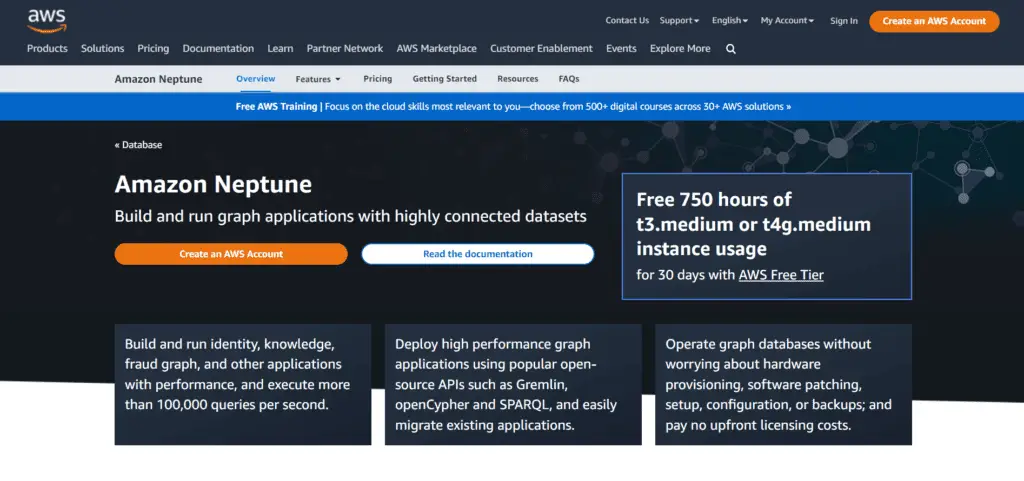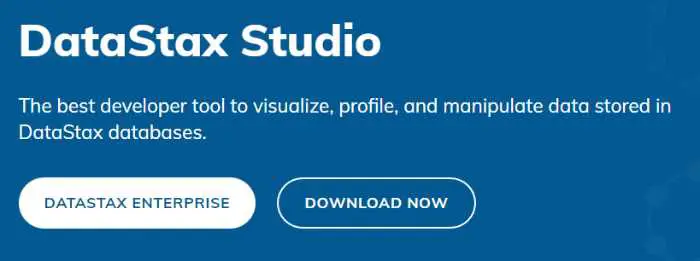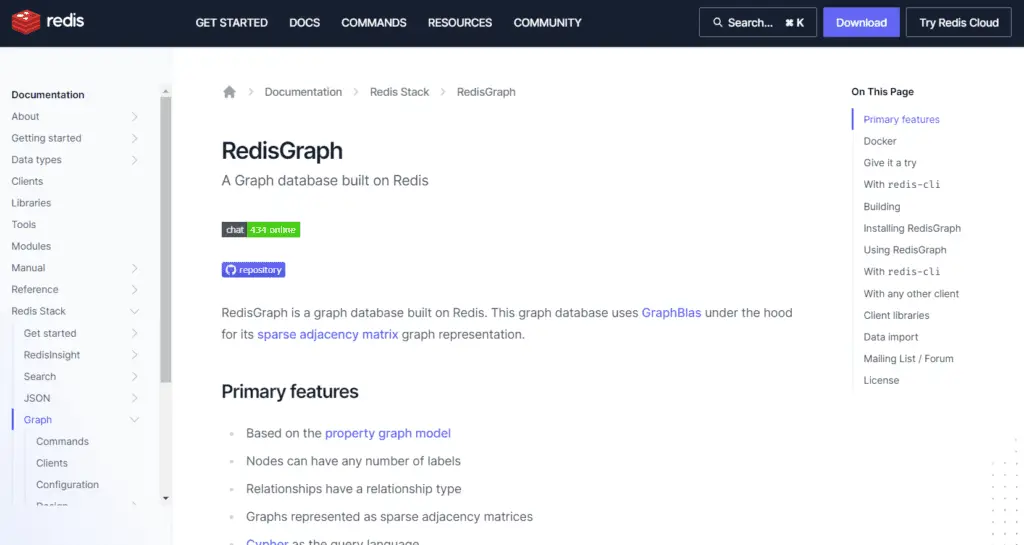This post may contain paid links to my personal recommendations that help to support the site!
Do you need to store and process data more efficiently? If so, then a graph database may be the right solution for you.
Graph databases are ideal for managing and processing data that is interconnected.
In this blog post, we will discuss the 5 best graph databases of 2023. We will provide an overview of each database, as well as their unique features and pricing and our bottom line on each one!
Read on to find out!
What is a Graph Database?
A graph database is a database that uses graph structures for semantic queries with nodes, edges, and properties to represent and store data.
Nodes are the entities or vertices in the graph. Edges are the lines or relationships that connect the nodes. Properties are attributes on the nodes or edges.
Graph databases are used in search engines such as Google’s Knowledge Graph.
Graph databases are different from other types of databases because they offer a more flexible data model compared to a relational database.
This means that they can easily represent any kind of relationship, making them perfect for managing interconnected data.
There are many different graph databases available, so it can be difficult to know which one is the best for your needs.
To help you out, we’ve compiled a list of the best graph databases!
What Are The Best Graph Databases?
- Neo4j
- Amazon Neptune
- DataStax Astra DB
- OrientDB
- RedisGraph
Now let’s have a look at them.
1. Neo4j
Overview:
Neo4j is one of the most popular graph databases on the market. It is a powerful, scalable, and efficient database that supports a wide range of data models.
Neo4j is perfect for managing highly-interconnected data. It offers features such as built-in ACID transactions, scalability, and high performance.

Neo4j also has a large community and many resources available, making it a great option for those coming from relational databases or new to graph databases.
Built for performance, Neo4j database systems have the fastest path to graph and is able to take heavy machine learning workloads.
Unique Features:
- Popular graph database
- Has a large community
- High performance
- Free option available
- Many pricing options are available
Pricing:
The Neo4j graph database comes with 2 options – Cloud and Self-Hosted.
Here are the prices for the Cloud Graph Database (AuraDB).
- AuraDB Free: FREE
- AuraDB Professional: $65/month
- AuraDB Enterprise: Contact sales

Here are the prices for the Self-Hosted Graph Database.
- Community Edition: FREE
- Enterprise Edition: Contact sales

My Take:
Neo4j is perfect for you if you’re looking at a popular, reliable graph database that’s used by a large community of developers. Its high performance is also good for running heavy data science loads, which is useful for ML tasks.
2. Amazon Neptune

Overview:
Amazon Neptune is a fast, reliable, and fully-managed graph database service. It is designed for workloads that require low latency and high throughput.
Amazon Neptune supports popular graph data model languages, including Property Graph Apache TinkerPop Gremlin and W3C’s Resource Description Framework (RDF) 1.1 and SPARQL 1.1.
It also has integrations with other Amazon Web Services, such as Amazon EC2 instances and Amazon S3 storage. This makes it a good choice if you’re currently using the AWS ecosystem.
Unique Features:
- Fully-managed
- Good for low latency
- Can handle high-throughput
- Supports popular graph query languages
- Greater flexibility in modeling
- Multi-model database
- Integrated to Amazon Web Services
Pricing:
Amazon Neptune offers two pricing options:
On-demand instance pricing (billed by the hour): start at $0.06 per hour
Database storage and I/Os (billed in per GB-month increments): $0.10 per GB-month ($0.20 per 1 million requests)
My Take:
If you’re looking for a graph database that is fully managed and offers good performance, Amazon Neptune is a great option. It is also integrated with other AWS services, which can be beneficial if you’re already using the AWS ecosystem.
Also, if you’re familiar with graph query languages, Amazon Neptune would be very familiar to you because of its support for Gremlin, W3C’s Resource Description Framework, and SPARQL.
3. DataStax Astra DB

Overview:
DataStax Astra DB is a fast, cloud-native, distributed database service that is built on Apache Cassandra. It is designed to be scalable, reliable, and secure.
DataStax Astra DB offers a serverless architecture with no need for database administrators. It also has a pay-per-use pricing model with no upfront costs.
Astra DB is designed to be highly available and able to handle large-scale workloads. It also supports popular graph query languages such as Cassandra Query Language (CQL), Graph/Gremlin, and Spark SQL language.
Astra DB is also integrated with DataStax Studio, which is a web-based tool that makes it easy to query and visualize your data points.

Unique Features:
- Highly available
- Can handle large-scale
- Has integrations with Datastax Studio
- Supports popular graph query languages
- Good for scaling (offers a pay-as-you-go pricing model)
Pricing:
The pricing for DataStax Astra DB comes in 3 tiers – Free, Pay As You Go, and Enterprise.
- Free: $0/month
- Pay As You Go: Calculate using their price calculator
- Enterprise: Contact Datastax

My Take:
DataStax Astra DB is a great option if you’re looking for a graph database that is highly available and can handle large-scale workloads. The pay-as-you-go pricing model is also beneficial if you’re looking to scale your application.
In addition, the integrations with DataStax Studio can be helpful if you want to easily query and visualize your graph data.
However, keep in mind that DataStax Studio is only available for the Enterprise tier.
4. OrientDB

Overview:
OrientDB is a multi-model, open-source graph database that is designed to be scalable and fast. It supports both SQL and NoSQL databases.
OrientDB offers features such as ACID transactions, scalability, high performance, and a flexible data model. It also has a large community and many resources available.
It is also integrated with Apache TinkerPop, which is a popular graph computing framework.
Unique Features:
- Open-source database
- Can be scaled
- Supports SQL and NoSQL databases
- Has integrations with Apache TinkerPop
Pricing:
OrientDB offers both a free community edition and paid enterprise edition.
OrientDB Community Edition: FREE
OrientDB Enterprise Edition: FREE (Made open-sourced since 2022)
My Take:
OrientDB’s open-source nature is the best graph database for you if you’re looking for a cost-effective solution. This applies no matter whether you’re looking for a SQL or NoSQL database.
5. RedisGraph

Overview:
RedisGraph is a graph database that is built on Redis. It is designed to be scalable, fast, and lightweight.

RedisGraph offers features such as ACID transactions, high performance, and a flexible data model. It also has a large community and many resources available.
Key Features:
- Supports ACID transations
- High performance
- High flexibility
- Lightweight
Pricing:
RedisGraph is open-source (free).
My Take:
RedisGraph is a great option if you’re looking for a graph database that is scalable, fast, and lightweight. The ACID transactions and high performance are especially beneficial.
Keep in mind that RedisGraph is a newer graph database and may not be as widely adopted as some of the other options on this list, so there may be lesser community support.
Related Questions
What is the most popular graph database?
Neo4j is the most popular graph database. It is the most commonly used database among developers for its high-performance and enterprise-grade graph model. Neo4j’s self-hosted and cloud offerings are the most popular products used.
What is the best free graph database?
These are the top free graph databases
- Dgraph
- OrientDB
- Tigergraph
- FaunaDB
What is the best use of a graph database?
Creating representations in relationships is the best use of a graph database. By mapping relationships between data points, users can run higher-level analysis data science work in a highly-scalable manner.
Is Neo4j the best graph database?
Neo4j is the best graph database for a high-performance solution with a large community of developers. Its high performance is also good for running heavy data science loads, which is useful for ML tasks.
Conclusion
There you have it, these are all the graph databases I’ve found to be the best among those available out there!
We hope this list has helped you narrow down your options and find the graph database for your needs!
Thanks for reading!
My Favorite Learning Resources:
My Recommended Learning Platforms!
| Learning Platform | What’s Good About the Platform? | |
|---|---|---|
| 1 | Coursera | Certificates are offered by popular learning institutes and companies like Google & IBM |
| 2 | DataCamp | Comes with an integrated coding platform, great for beginners! |
| 3 | Pluralsight | Strong focus on data skills, taught by industry experts |
| 4 | Stratascratch | Learn faster by doing real interview coding practices for data science |
| 5 | Udacity | High-quality, comprehensive courses |
My Recommended Online Courses + Books!
| Topic | Online Courses | Books | |
|---|---|---|---|
| 1 | Data Analytics | Google Data Analytics Professional Certificate | – |
| 2 | Data Science | IBM Data Science Professional Certificate | – |
| 3 | Excel | Excel Skills for Business Specialization | – |
| 4 | Python | Python for Everybody Specialization | Python for Data Analysis |
| 5 | SQL | Introduction to SQL | SQL: The Ultimate Beginners Guide: Learn SQL Today |
| 6 | Tableau | Data Visualization with Tableau | Practical Tableau |
| 7 | Power BI | Getting Started with Power BI Desktop | Beginning Microsoft Power BI |
| 8 | R Programming | Data Science: Foundations using R Specialization | Learning R |
| 9 | Data Visualization | – | Big Book of Dashboards |

